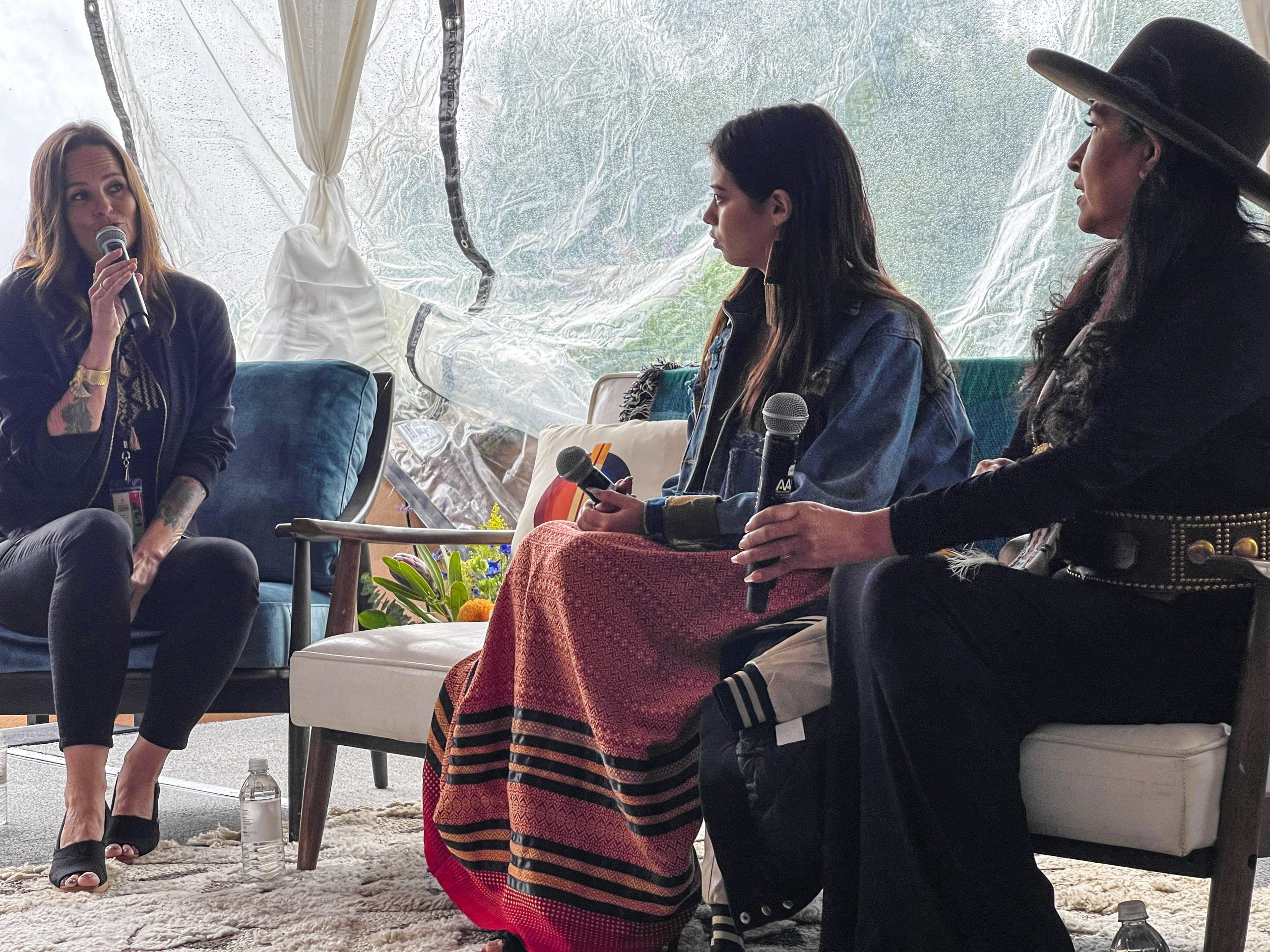Indianz.Com > News > ‘Not a tribal citizen’: Prominent Hollywood figure Heather Rae lacks connection to Cherokee Nation

‘Not a tribal citizen’
Prominent Hollywood figure Heather Rae has claimed Cherokee for decades
Monday, March 27, 2023
Indianz.Com
The Cherokee Nation is distancing itself from a prominent Hollywood filmmaker, confirming Heather Rae isn’t a tribal citizen and hasn’t benefited from film incentives offered on the reservation.
In a statement on Sunday, the tribe’s business arm said it provided funding in support of Fancy Dance. The project, in fact, was the first recipient of incentives provided through a $1 million program at the Cherokee Nation Film Office.
“The Cherokee Nation Film Office provided funding in support of ‘Fancy Dance’ based on its production expenses while filming within the Cherokee Nation Reservation, as well as the film’s more than 200 background actors, cast and crew who provided CDIB verification of citizenship in a federally recognized tribe,” Brandon Scott, the vice president of enterprise communications for Cherokee Nation Businesses, said in the statement.
But Scott said Rae did not benefit from the incentive program, which is the first of its kind in Indian Country. The distinction is significant because Rae — unlike most of the cast and crew — lacks ties to a tribal nation, so she wouldn’t qualify for one of the main requirements of the initiative.
“Heather Rae is not a citizen of the Cherokee Nation,” Scott said in the statement. “She has no affiliation with Cherokee Nation Film Office and was not included in any funding it provided to
‘Fancy Dance.'”


In fact, when questioned about Littlefeather’s lack of ties to the two tribal nations she claimed for decades, The Academy refused to speak on the record with Indianz.Com despite reaching out and asking for coverage of the September 2022 event where Rae’s “input and wisdom” were praised from the stage by the organization’s current and immediate past leadership. A month prior, Indianz.Com sent a detailed list of questions, inquiring whether The Academy contacted the Pascua Yaqui Tribe and the White Mountain Apache Tribe, consulted them or included them in planning for the event. The inquiry also asked specifically whether The Academy accepts “self-identification” of tribal identity. In materials for the celebration, Littlefeather was labeled as “(Apache/Yaqui/AZ)” — with “AZ” denoting the state of Arizona, where the Pascua Yaqui Tribe and the White Mountain Apache Tribe are headquartered. Still, a spokesperson for The Academy Museum of Motion Pictures in Los Angeles, California, where the program with Littlefeather took place, said answers to questions about tribal inclusion weren’t pertinent to an event that was presented as “healing” for the way Native people have been treated in Hollywood. “Off the record, as a majority of your questions do not pertain to the museum’s September 17 program, we are not able to participate in your story,” Stephanie Sykes, the director of communication for the museum, wrote in an August 29, 2022, email. Sykes had not asked Indianz.Com beforehand for agreement on whether to go off the record in any of her communications. She also did not respond when Indianz.Com had offered to speak via phone about the detailed questions during initial contact with The Academy on August 15.

Search
Filed Under
Tags
More Headlines
Native America Calling: A more meaningful Thanksgiving lesson
AUDIO: Republican lawmaker blocks Wounded Knee sacred site bill
VIDEO: Republican lawmaker blocks Wounded Knee sacred site bill
Native America Calling: Native in the Spotlight with Mark Trahant
VIDEO: Roll Call on Nomination of Patrice H. Kunesh, of Minnesota, to be Chair of the National Indian Gaming Commission
AUDIO: Business Meeting to consider the Nomination of Patrice H. Kunesh, of Minnesota, to be Chair of the National Indian Gaming Commission, S. 4643 & S. 4998
VIDEO: Business Meeting to consider the Nomination of Patrice H. Kunesh, of Minnesota, to be Chair of the National Indian Gaming Commission, S. 4643 & S. 4998
Republican ally of Donald Trump opposes pick for Indian gaming agency
Native America Calling: Substance abuse treatment remains elusive for hundreds of people after Arizona Medicaid fraud
Native America Calling: Remembering those who stood up to boarding schools
Alaska Native bills on agenda amid limbo in Congressional race
Cronkite News: Donald Trump’s Defense pick faces scrutiny in U.S. Senate
Native America Calling: What to expect on Trump’s first day
Daily Montanan: Drug trafficking ring targeted multiple reservations
Cronkite News: New law requires data collection on Indigenous health needs in California
More Headlines
AUDIO: Republican lawmaker blocks Wounded Knee sacred site bill
VIDEO: Republican lawmaker blocks Wounded Knee sacred site bill
Native America Calling: Native in the Spotlight with Mark Trahant
VIDEO: Roll Call on Nomination of Patrice H. Kunesh, of Minnesota, to be Chair of the National Indian Gaming Commission
AUDIO: Business Meeting to consider the Nomination of Patrice H. Kunesh, of Minnesota, to be Chair of the National Indian Gaming Commission, S. 4643 & S. 4998
VIDEO: Business Meeting to consider the Nomination of Patrice H. Kunesh, of Minnesota, to be Chair of the National Indian Gaming Commission, S. 4643 & S. 4998
Republican ally of Donald Trump opposes pick for Indian gaming agency
Native America Calling: Substance abuse treatment remains elusive for hundreds of people after Arizona Medicaid fraud
Native America Calling: Remembering those who stood up to boarding schools
Alaska Native bills on agenda amid limbo in Congressional race
Cronkite News: Donald Trump’s Defense pick faces scrutiny in U.S. Senate
Native America Calling: What to expect on Trump’s first day
Daily Montanan: Drug trafficking ring targeted multiple reservations
Cronkite News: New law requires data collection on Indigenous health needs in California
More Headlines